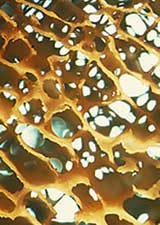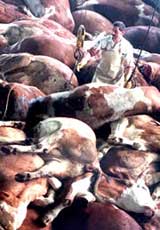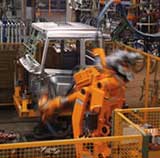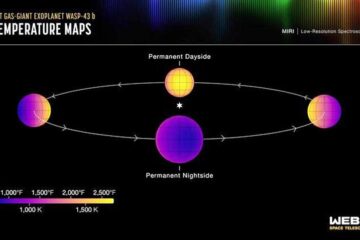Latest News

Researchers Isolate Genes for Mosquito’s Sense of Smell
New research is helping to unravel the machinery that allows a mosquito to sniff out its human quarry, which could lead to more and better ways of foiling the disease-spreading insects. A report published today in the online version of the Proceedings of the National Academy of Sciences describes four genes that appear to produce odor-sensing molecules in Africa’s Anopheles gambiae, a carrier of malaria, the number two killer in the developing world. Understanding how such genes operate could en

DNA repair could reduce sunburn
An immune system chemical may undo skin damage by sunlight.
A chemical involved in immune-system signalling may be able to reverse some types of skin damage caused by sunlight. It could reduce sunburn by activating DNA-repair mechanisms, a new study suggests, raising the possibility that the chemical might be used to prevent or treat skin cancer 1 .
High-energy ultraviolet light is thought to promote skin cancer by damaging the DNA within cells. Skin cancer,

Material bones up
Programmed molecules build themselves into a bone-mimic.
Scientists in the United States have made self-assembling synthetic bone 1 . Carefully designed building-blocks join up to mimic bone’s complex molecular-scale architecture, bringing better prosthetics a step closer.
Materials engineers are keen to emulate the strength and toughness of biominerals such as bone, tooth and shell. Mollusc shells, for example, a composite of the mineral calcium carbonate a

BSE’s epidemic proportions
While prion diseases seem to be waning in humans, they could be waxing in sheep.
Variant Creutzfeldt-Jakob disease (vCJD) may claim only around 200 victims, a new model predicts 1 . This degenerative brain disease is thought to occur when people are exposed to misfolded prion proteins from meat infected with bovine spongiform encephalopathy (BSE or ’mad cow disease’).
Meanwhile, another study warns that a huge BSE epidemic could be brewing in the UK

Flower Chemicals Both Attract Friends and Deter Foes
Talk about multi-tasking. A new study reveals that in the St. John’s Wort plant, Hypericum calycinum, the same chemical not only attracts pollinating insects but also deters herbivores that pose a threat to its survival. The findings appear in the current issue of the Proceedings of the National Academy of Sciences.
To the human eye, the flowers of H. calycinum appear as uniform yellow disks (top image). Insects with ultraviolet-sensitive eyes, however, see a dark, ultraviolet-absorbing ce

Stiff challenge to instability
The secret of a steady hand is tightening the right muscles.
Controlling the stiffness of some of our muscles lets us manage tricky feats of manipulation, such as keeping a screwdriver in a screw, researchers have found 1 . We tune the stiffness to oppose motions in the direction of instability, such as the sideways slips that would let the screwdriver slide out of the slot.
Although demanding on the brain, this is the most energy-efficient strategy, say Mitsu











